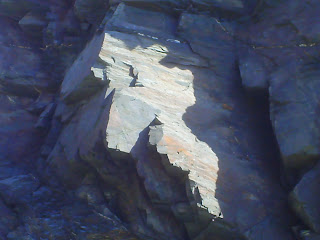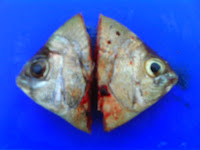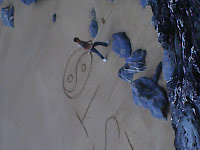The unfriendliness of Society to their activity is difficult for the artist to accept. Yet this very hostility can act as a level for true liberation.
Freed from a sense of security and community, the artist can abandon his plastic bank book just as he has abandoned other forms of security.
Both the sense of community, and of security depend upon the familiar. Free of them, transcendental experiences becomes possible.
(Mark Rothko 1903 - 70)
A genuine creative life which inevitably comprises of the occasional transcendantal experience or two is not compatable with existing in the world of current social or artistic conventions, and yet no-one is ever separated or outside of these social frameworks and conventions.
The two positions of conformity and creativity are not opposed to each other. I have experienced beautiful, and enlightening moments that have involved and centred upon the very things we think of as normal regardless of social, political or philosophical position.
But in terms of "normal" work, I have only ever had transcendental experiences in the company of others when engaged in an activity that was genuinely creative and included a wide degree of group and individual freedom, which is not conducive to the formal social structures and organisational processes of everyday convention. You can forget any glimpses of enlightenment in any occupation that is not creative, and by creative I do not mean working in the creative industries as a designer, performer, paid artist, or yoga tutor.
Transcendental moments or experiences are transitory and people often experience such phenomena as seemingly ordinary events. This is down to personal differences in feelings, intuition, emotions, and how open-minded one is at that precise moment.
In fact I do not regard transcendantal experiences as anything other than a moment of self-realization or personal insight into the context of ones life within the grandiloquence of the Universe itself. As for the term spiritual, that has been over-used and much maliogned by New Age Spiritualism which is nothing to do real spiriruality at all, but a simple throwback to 1960's of people experiencing a genuine sense of individual freedom, personal and social creativity.
I digress...although my own theory of creativity and community is aesthetically perfect, I don't think it is possible to have an ideal community or Society in reality, as it would require a group of people to be enlightened about themselves and others around. They would all be accepting of the strengths, flaws and differences of each other, and the history of humanity has seldom seen this except in the behaviour and philosophy of a very rare few individuals. I refer to the likes of Joan of Arc, Ghandi, Mother Theresa etc.
Plato's Republic of an ideal utopian society is unworkable, and would slowly but inevitably morph into Animal Farm, or Lord of The Flies; Both of these social processes and communities I have seen and experienced at first hand, and observed in even the most creative of art communes.
It is not the gathering of creatives or artists with a shared aim in mind which produces truly revolutionary art, but the psychological ability to be genuinely open-minded and to create as an individual within the wider social processes of genuine equality, and real democracy.
The problem of alternative "modern" art communties is the people who form and organize them are themselves socially conditioned to follow the same social and political processes we see in main stream politics and social insitutions. To avoid this everyone would have to understand that each participant is equally both important and unimportant as everyone else, and this require humility. A trait sadly lacking in my own constitution at this present time, but something I am constantly working upon. A special characteristic I have rarely come across, although we all have our moments!
At this point it seems clear to me that any notion of actually putting into social practice any form of community based upon art or creativity, leads only to one end.....covert fascism. And my experiences of living in art communities have proved exactly that.
I would even venture further, and say any conventional conception of a creative art community that has been in existence for more than three years should immediately cease to exist, or it should evict all those in positions of power that run it as there is no doubt it will be running along the rigid organisational lines of conventional Society and the social processes of an establishment.
In order to ensure genuine creativity and democracy in any community you need to schedule in revolutionary structure snad processes riught from the beginning woven into the very fabric of art processes and social action, not just write them down or expect people to understand them. The best way to ensure this would be a complete social revolution every three years; and which artistic, creative. or political incumbent is going to agree to their own scheduled demise in the interests of future freedom?



















































